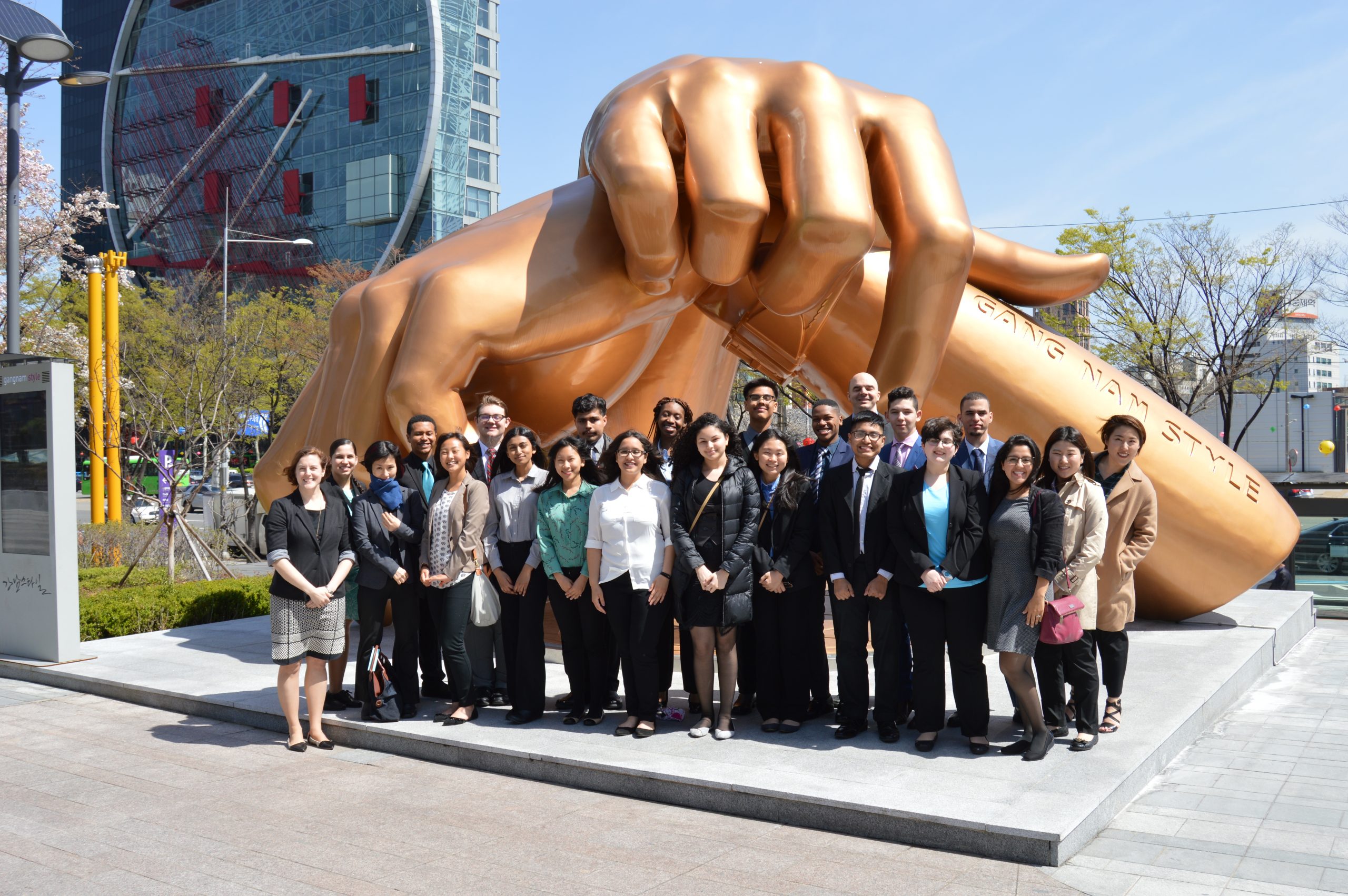
Photo courtesy of Tiffany Lim
South Korea in a Westerner’s Perspective
Having been granted the opportunity to, in a sense, reside in South Korea for 10 days, you can call me a transformed person.
In the sum of a 12 hour flight, I entered a new world. People usually call this world South Korea. Because of Project Bridge, a program made possible by Pacific Century Institute, I was able to travel to a fully-subsidized study tour to a brand-new country.
Before I progress with my reflection, I want to stress that my trip to Korea was not a touristy one, but a study tour, meaning that there were a lot of meetings with sponsors such as Hyundai, POSCO, Poongsan and so on.
The purpose of this program and this study tour is to bring awareness to the cultural blindness that unfortunately occurred in the Los Angeles riots, as well as to be a Youth Ambassador to represent the youth of America. In a professional fashion, I and 15 other Youth Ambassadors, eight from Los Angeles and eight from New York, trudged on.
From the Project Bridge workshops, it was routine to read verbatim of the history rooted behind Korea and Koreans or some other forms of it. However, residing in South Korea for 10 days is a different story. I had a hypothesis that essentially living in Korea would be three-dimensional, and put into perspective for me.
Prior to traveling, I was cautioned about the possible events that could happen during interactions with the South Korean locals. As an orient being, I anticipated the most explicit comments on my dark skin color, or how uncourteous my actions were. To my surprise, my mal anticipations did not turn out. With education on how to act respectfully in this new country, Korea was easy to adapt to, especially when pretty much all the locals spoke enough English to help us navigate through the city.
If I were to sum up my entire travel, it would be long days with endless bus rides, walking, standing, and listening. This is what my study tour was like for 10 days on a consecutive basis. There is always a price for free things, and my payment, in this case, was my time and energy.
My first step in South Korea was at Incheon Airport. In this airport, we were advised to change into formal attire in preparation for our soon-to-be appearance at the Korea International Trade Association (KITA) which was a non-profit trade organization in, well, Korea. We spent our first day listening and participating in presentations regarding KITA and its sister organization, Korea-U.S. Economic Council, Inc (KUSEC). Formal days with our sponsors were mostly spent on interactive presentations such as what was previously mentioned.
I’m going to condense my peaks and highlights since this was a very eventful trip.
- Everything nuclear. My complexion was not the only thing I was worried about. Before even traveling to Korea, the news stations were zooming over North Korea’s passionate stance on nuclear testing. I am not kidding when I say that while we were present in South Korea, North Korea attempted to launch a nuclear attack on South Korea. It also did not help that President Donald Trump was feeding more into the conflict between the two countries. This all did not hit me until we set foot in the Korea Financial Investment Association; the presenter expressed his genuine concern over President Trump feeding into this current horror of South Korea while nervously chuckling for the reason being that Seoul, the nation’s capital is neighbors with the 38th parallel of the demilitarized zone, and could be brought to ashes.
- South Korea’s flawed education system. There is no exaggeration when I say that South Korea worships education as if it were a religion. It has come to the extent that the investment of private education is topmost in this country. The scholastic culture of South Korea takes the “All-Work, No Play” system to heart, which reflects on the emergence of academic competition that rooted from the rapid industrialization of Korea, and it came with a fare. We arrived to a stressed Korea—students were stressing over their midterms. When getting to know the students, they were genuinely the kindest and happiest they could be, but there was a hidden mask of a stressful ambience I could feel. The students held the mentality that if they studied hard enough to get to the best university, financial stability will come their way. In order to retain that kind of mentality, their personal happiness was no priority.
- Awareness of the Sewol ferry accident. As aforementioned, we came to one of South Korea’s lowest points. Midterms, nuclear craziness, and the Sewol ferry accident were all simultaneously happening. It was a very depressing time when we came to the attention of the anniversary of the Sewol ferry accident. This dismal moment assisted me to land a reality check which consisted of me epiphanizing that I could not assume my time on earth, and that I could be more compassionate and appreciative of both my circumstances and surroundings. Everything came full circle when this came to my knowledge.
All in all, having been provided this opportunity, I was granted the sincere pleasure of immersing myself in South Korean culture such as with interacting with the locals, experiencing exclusive Korean traditions, and consuming all the food. Project Bridge was, all in all, a success in my eyes. I truly feel that I have found the importance of the connects— the bridge between all cultures, and it first embeds from compassionate perception.